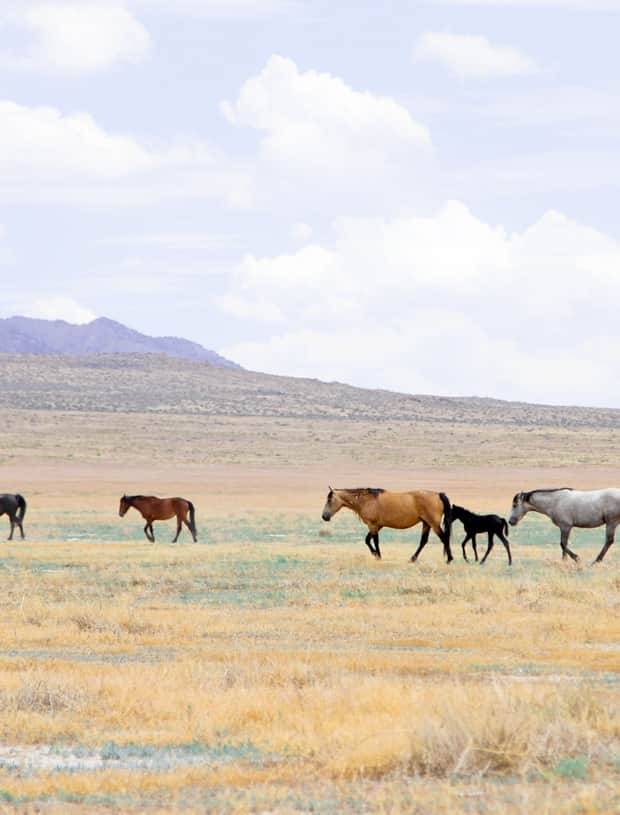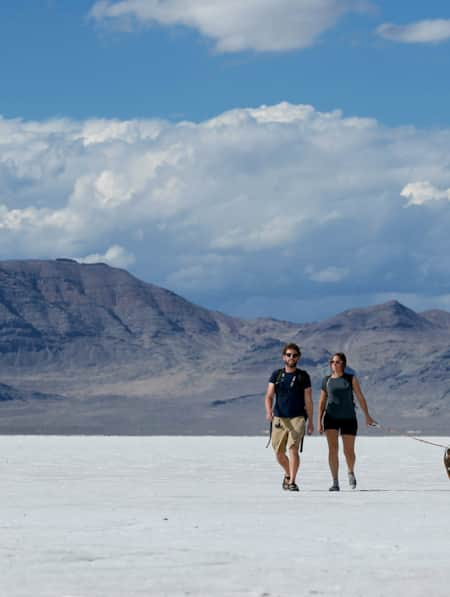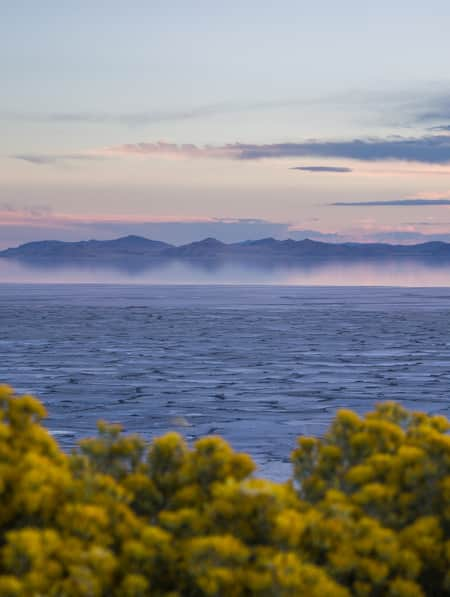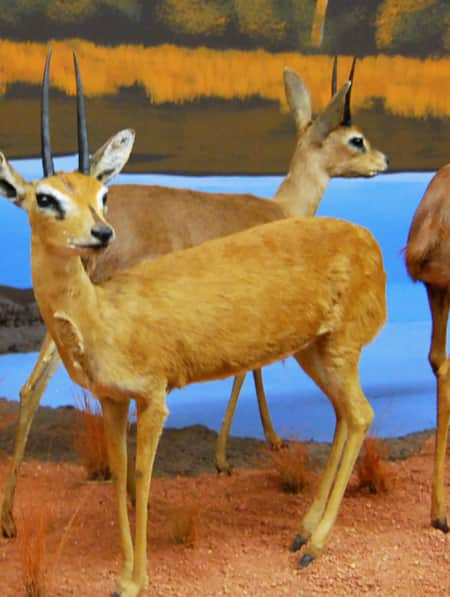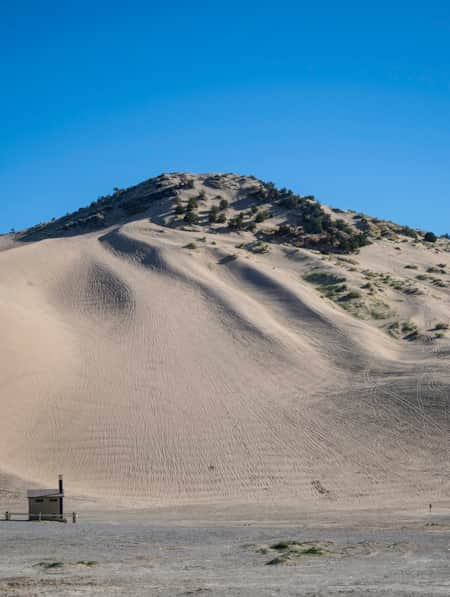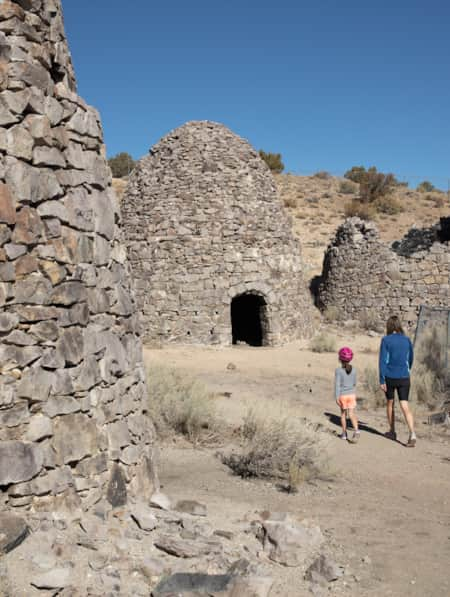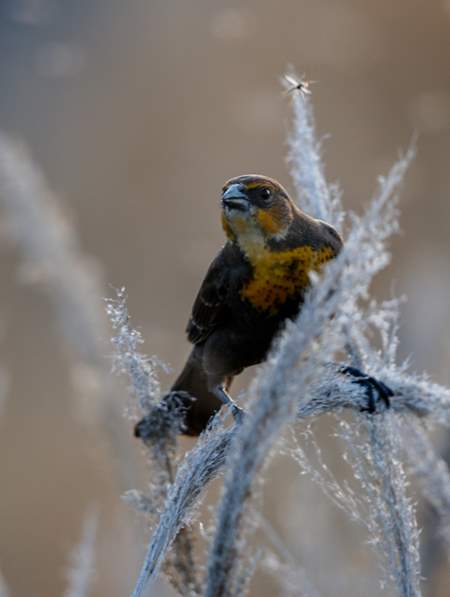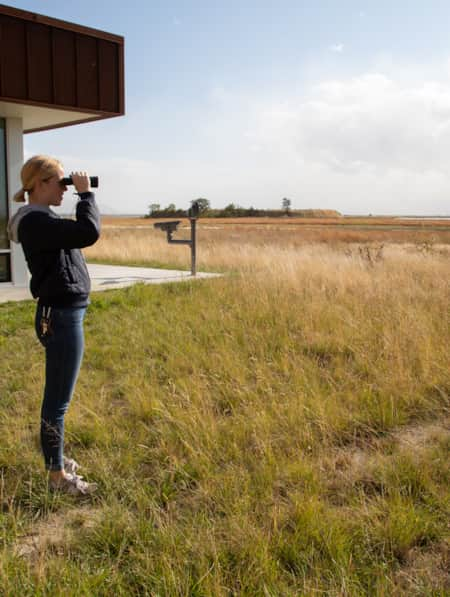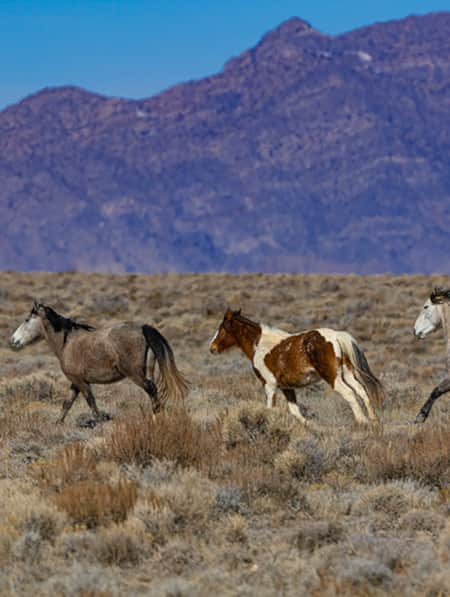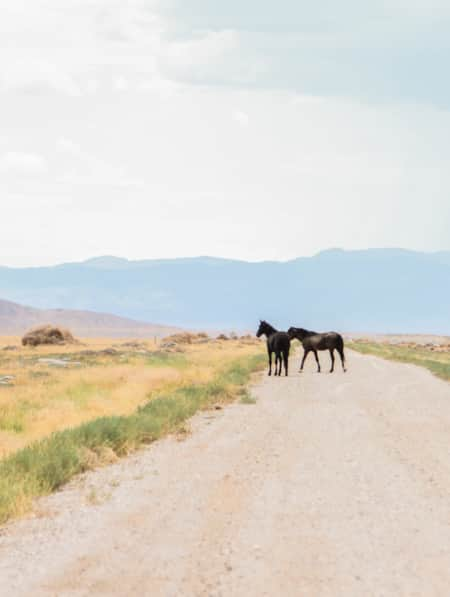How a Window View Led to a Career as a Raptor Biologist
Hawkwatch’s Steve Slater rappels or climbs into bird nests — whatever it takes — as he studies the West Desert’s golden eagle population.
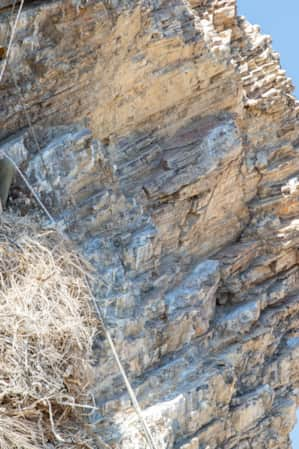
Sometimes the moments that dictate the course of your life come from obvious places like school, family or planned experiences. And sometimes they come just outside your window.
As a toddler, Steve Slater had already shown a keen interest in the natural world. But he points to a specific event when he was seven years old that locked in his career path as a wildlife conservationist and scientist.
“A pair of robins nested in the birch tree right outside my bedroom window. I had my own personal blind to observe them,” said Slater, who grew up in Muskegon, Michigan. “I watched the nest constantly, recording when they laid eggs, how many days until they hatched and how often they fed the chicks before they flew off.”
Nests are still a big part of Slater’s life. Albeit these days the nests he watches are much larger, and observing the occupants isn’t quite so easy. As the conservation science director for HawkWatch International, a nonprofit raptor conservation group based in Salt Lake City, Slater has an even more intimate view of nests.
Each year Slater and other HawkWatch staff observe golden eagle nests to document the number of eaglets. After the young eagles have reached a certain age, Slater and his colleagues return to check the condition of the raptors and, if they are healthy enough, place a transmitter vest on the birds so they can be tracked once they leave the nest.
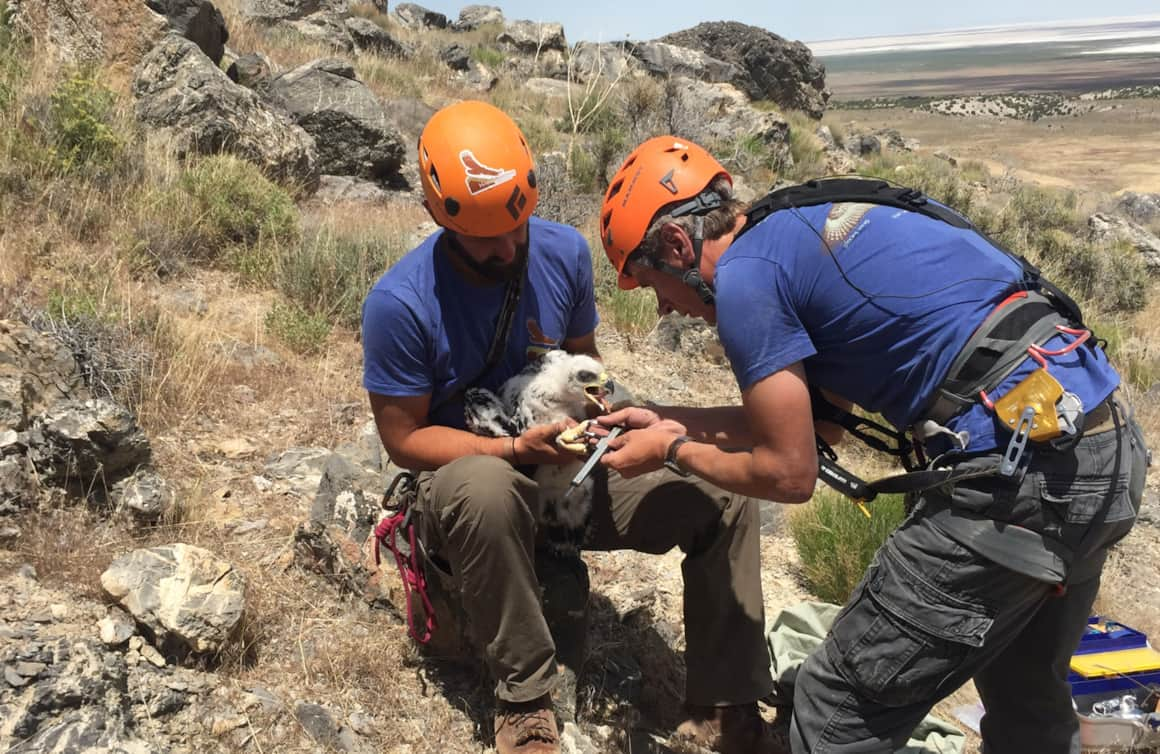
Each year Slater and other HawkWatch staff observe golden eagle nests to document the number of eaglets.
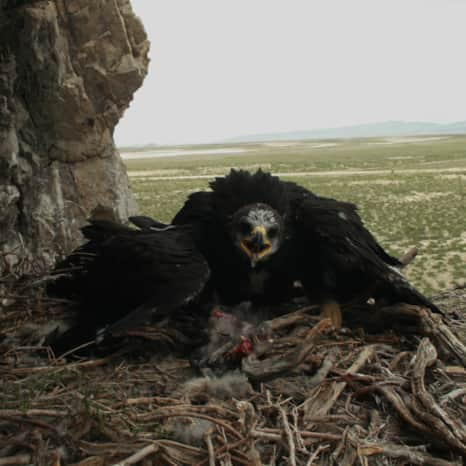
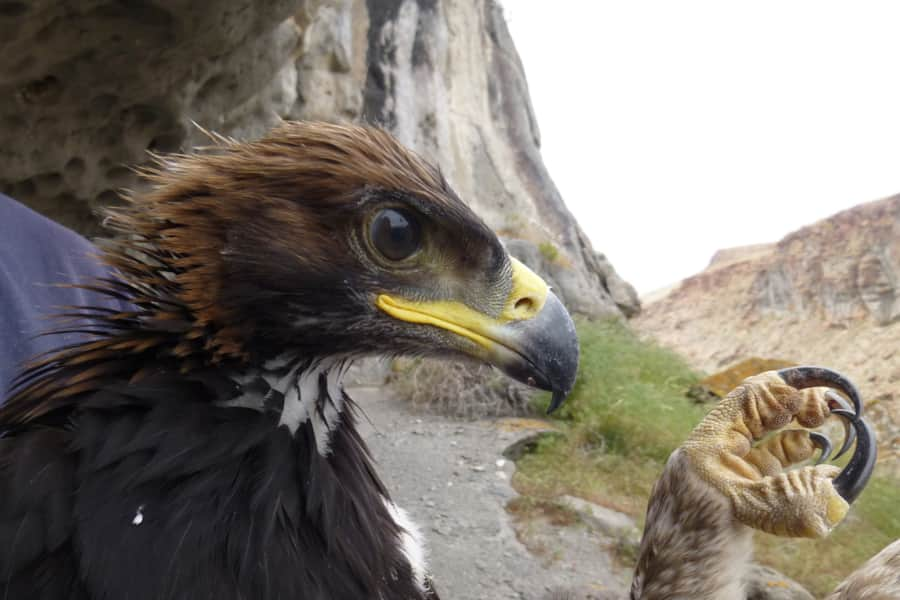
The Call of the Nests
Although he has been tempted, Slater has never laid down in a golden eagle nest. Yet there are some big enough that he could lie down and not bump his feet or have to bend his legs. Most nests are 3- or 4-feet wide. Many are found wedged in cracks in cliffs. Some of the largest nests can reach 10 feet-tall, which suggests decades of use.
“And then there are some totally unimpressive nests that are a foot tall with gaps in the nest like an old house, and you wouldn’t think anything would be in them — and then a head pops up,” Slater said.
Getting into nests to check on the condition of young golden eagles requires skills ranging from tree climbing to rappelling down a sheer cliff face. Some species will protect their young by dive bombing intruders, but golden eagles tend to vacate the area and return when the researchers are done.
Slater finds many eagle nests aren’t empty, as he’s likely to observe dead animals and bones littering the living area. Rabbits are the main food source for golden eagles, particularly in Utah’s West Desert where the bulk of HawkWatch International’s research is conducted. When rabbit populations are low, eagles will find whatever they can for themselves and their young. Nests can contain rabbits, roadkill, other raptors and snakes. (Read: “What Hasn’t Been Found.”)
And sometimes the prey aren’t exactly dead. Once, after rappelling down to a nest, Slater observed a snake on one side and an eaglet on the other side. “It was not unusual to see a snake in a nest,” he said. “I figured the chick just had not been hungry enough to eat it yet. As soon as I stepped in the nest, the snake must have felt the vibration and it reared up trying to defend itself.”
Slater was glad he was still harnessed to the rope because he almost jumped out of the nest, fearing it might have been a rattlesnake. Once he calmed down and explained to his chuckling colleagues what had happened, Slater realized it was a gopher snake that had been blinded by the eagle parents when it was captured. (Rattlesnakes aren’t common prey for golden eagles, but they have been documented in Utah nests.)
Raptors: The Wolves of the Skies
Almost falling out of a golden eagle nest in the Great Basin is a long way from watching robin eggs hatch in Michigan, but there is a — mostly — logical path that brought Slater to Utah.
After high school, Slater headed for Michigan State University and the fisheries and wildlife program. There was one animal that held Slater’s attention more than his feathered friends. Being in Michigan, he had heard a lot about the famous wolves of Isle Royale National Park, an island on Lake Superior. Wolves had piqued his wildlife interest at a young age and he was planning to focus on the canines as a student and into his professional career.
“One of my early advisors basically talked me out of it,” Slater recalled. “He said there was a limited number of wildlife biologists focusing on wolves and that it was highly political and controversial; and I wouldn’t like getting pulled through all that stuff.”
Slater figured raptors were the wolves of the skies, so it was back to the birds. He ended up with a wildlife biology undergraduate degree. In the spring of 2000, he took a seasonal field job in Wyoming studying sage grouse — a species that would eventually become one of most politicized creatures in the United States as the federal government considered placing the birds of the West’s sagebrush steppe ecosystems on the Endangered Species List.
Slater developed an appreciation for sage grouse and their habitat that summer. He also enjoyed the people he worked with. In the fall of 2000, he started a master’s project through the University of Wyoming.
His thesis focused on how sage grouse used areas of natural wildfire burns and prescribed (intentional human-caused) burns. Slater left Wyoming in 2006 with master’s and doctoral degrees in zoology and physiology. His Ph.D. dissertation centered on bird community responses to cottonwood tree declines in riparian areas along rivers, an invasion of non-native Russian olive trees and landscape alteration.
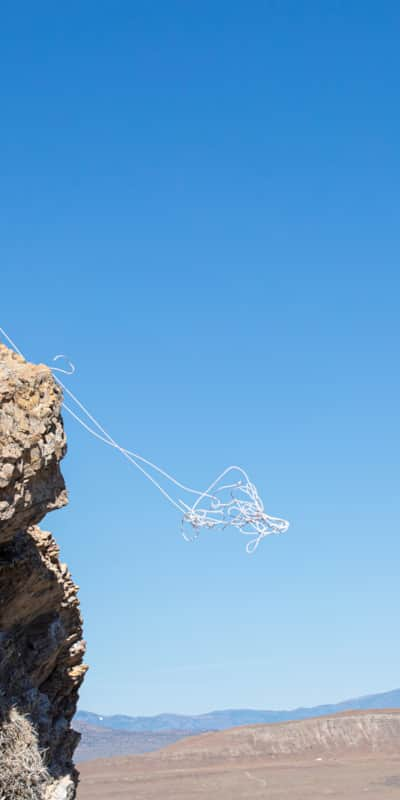
Finding a Scientific Home in the West Desert
Now looking for a real job, Slater heard HawkWatch International wanted someone to analyze data to see how oil and gas development impacted historic raptor nesting areas in Wyoming’s Pinedale area. He was hired for a two-year contract as a conservation scientist, and also ended up studying if perch deterrents on power poles worked to slow down raptor predation on sage grouse.
Slater’s role with HawkWatch International continued to evolve. Eventually he moved to Utah and soon found himself spending most of his time focused on golden eagles in the West Desert. The Bureau of Land Management boundaries for the West Desert cover roughly one-third of the state in the northwestern portion of Utah, stretching into Summit County and including Millard County to the south. Most Utahns, however, typically think of landscape generally on the western side of Interstate 15 to the Nevada border as the West Desert.
“It is such a unique place. You can feel so alone and remote, but when you really look around, the entire area has been heavily impacted by humans,” he said.
On any given research trip, Slater might drive through a ghost town, pass an abandoned mine shaft, cross the historic Pony Express Trail or spot an eagle hanging out on an old railroad grade crossing not far from where the Golden Spike was driven to connect the transcontinental railroad in 1869.
The Great Salt Lake is often within sight, and he appreciates observing ancient Bonneville Lake shoreline levels etched on mountain ranges from Southern Idaho to I-70, which makes his job accessing golden eagle nests a little bit easier. He often catches glimpses of the Wasatch Front mountains while in the field and appreciates the view. Being able to see Big Cottonwood Canyon along the Wasatch gives him a sense of family, as that is where Slater, 45, and his wife, Annelise, live with their three boys.
Slater also has clearance to access the 800,000-acre U.S. Army Dugway Proving Ground — an important partner in raptor research. His research has landed Slater a seat on Utah’s Bureau of Land Management Resource Advisory Council, while he also serves as the facilitator for the Utah Eagle Working Group.
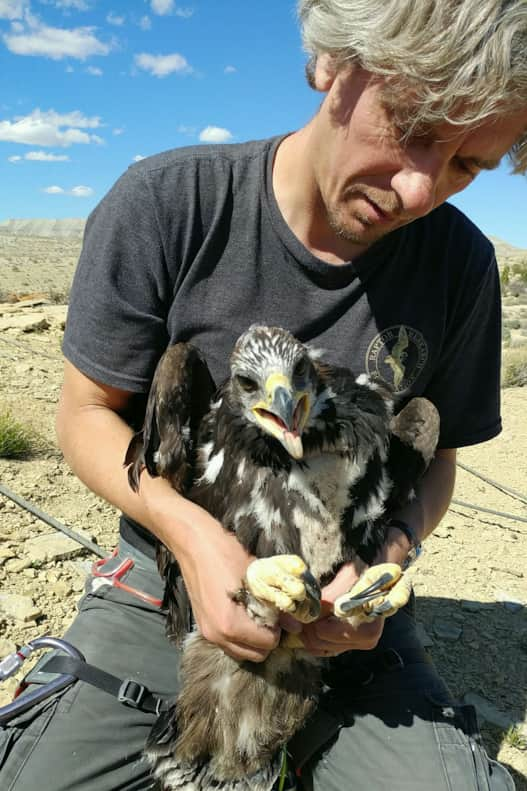
"The West Desert is such a unique place. You can feel so alone and remote, but when you really look around, the entire area has been heavily impacted by humans."
– Steve Slater
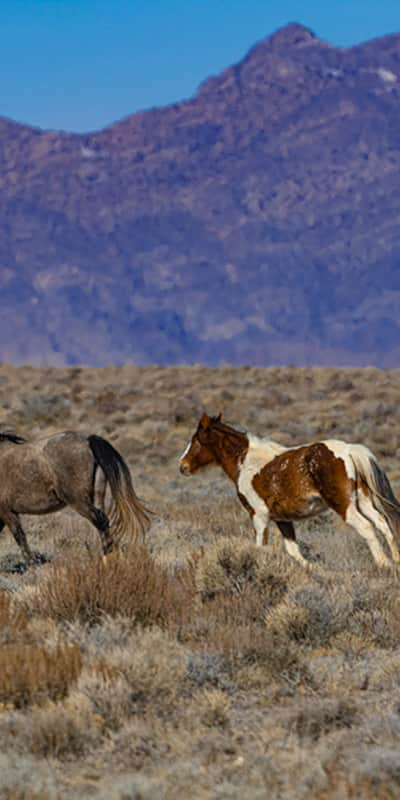
Where the Coyotes Serenade
His work is usually done in a quiet landscape, but impromptu firing gun ranges and all-terrain vehicle use (both causes of golden eagle nest abandonment) often break the silence.
A more peaceful disturbance happens on those nights when he decides to stay in the West Desert and coyotes serenade him to sleep. There isn’t a lot of wildlife in the area, at least not compared to other Utah ecosystems, so Slater takes time to appreciate the wild animals he does see. (Read: “The Herds of the West Desert.”)
It’s easy to spot big game animals like mule deer, elk and pronghorn. Coyotes, mountain lions and foxes are a little more difficult to observe. While he doesn’t always document the number of rabbits he sees, Slater does make mental notes of the general health of the population because that’s one of the prime factors in annual eaglet survival.
“We have really crossed a threshold in the West Desert with native plants lost to fire being replaced by cheatgrass,” Slater said. “Jackrabbits are the main prey species for golden eagles and their numbers are declining along with the native plants.”
He explained that a pair of goldens historically use an average four-mile radius as a territory. Now that often isn’t enough space to support the food base the eagles need to successfully raise their young.
“There are some birds that have been around long enough that they have figured out how to do extra things to make a go of it and they stay in the same nest,” he said. “Some of those eagles are now flying 30 miles away and feeding on the placentas left by cattle after they give birth.”
Rappelling into nests could be considered a job hazard, but it’s the commute that probably provides the greatest risk in his excursions. Dirt roads in the West Desert are known for eating tires. Slater could probably find a job in a NASCAR pit crew thanks to his ability to quickly change a flat.
He learned long ago to always carry an extra spare. “One year I think I had five flat tires in the course of a month and a half,” he said. “I’ve had many dozens of flats; more than I can count, even with 10-ply tires.”
During one trip, his new dog went exploring on her first overnight camping trip with Slater in the West Desert. He waited as long as he could, but he had commitments back in town. Driving a little faster than he should have, Slater lost control on the corner of a washboard dirt road. “The back end started bouncing and before I knew it, I had rolled twice,” he said.
Blood was everywhere from cuts to his face and head, his ribs hurt, and the topper for his truck was a couple hundred feet down the road. He spent an hour looking for his phone with no luck when a rancher pulled up and asked if everything was OK. The good samaritan gave him a ride to the closest town so he could call his wife and the office.
Before he could get to a phone, another rancher came across the debris of his wreck — and the first thing he saw was Slater’s phone.“He called my wife and told her he found this truck with blood everywhere and no one around,” Slater said. “She was frantic for about an hour until I finally called her.”
Slater made the long drive back out to look for the dog the next day. He found her near where they had camped. She hasn’t wandered much since.
"For me, the West Desert is a refuge. There is something meditative about being with the eagles."
– Steve Slater
The Meditative Quality of Being with Eagles
As the conservation science director, Slater doesn’t need to go into the wilds as much as he used to. As the boss, Slater could easily let younger staffers do all the early season monitoring. “But getting out to the places where eagles choose to nest is rejuvenating to me,” Slater said. “It is kind of why I got into this.” Because he is the only one permitted to place the transmitters on the eaglets, Slater is guaranteed to make those trips.
Being alone in a place where smart phones can’t find a signal and incoming email alerts don’t happen allows Slater to clear his mind and focus on the eagles. “For me, the West Desert is a refuge,” he said. “There is something meditative about being with the eagles. I can look through the spotting scope at a nest for three hours looking for a little fuzzy head to pop up, and it feels like it has only been 10 minutes.”
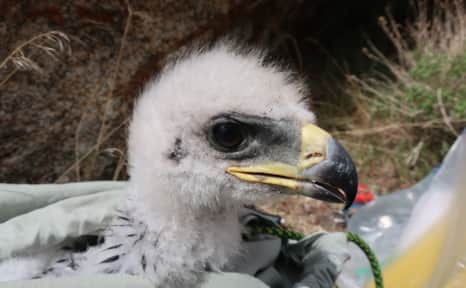
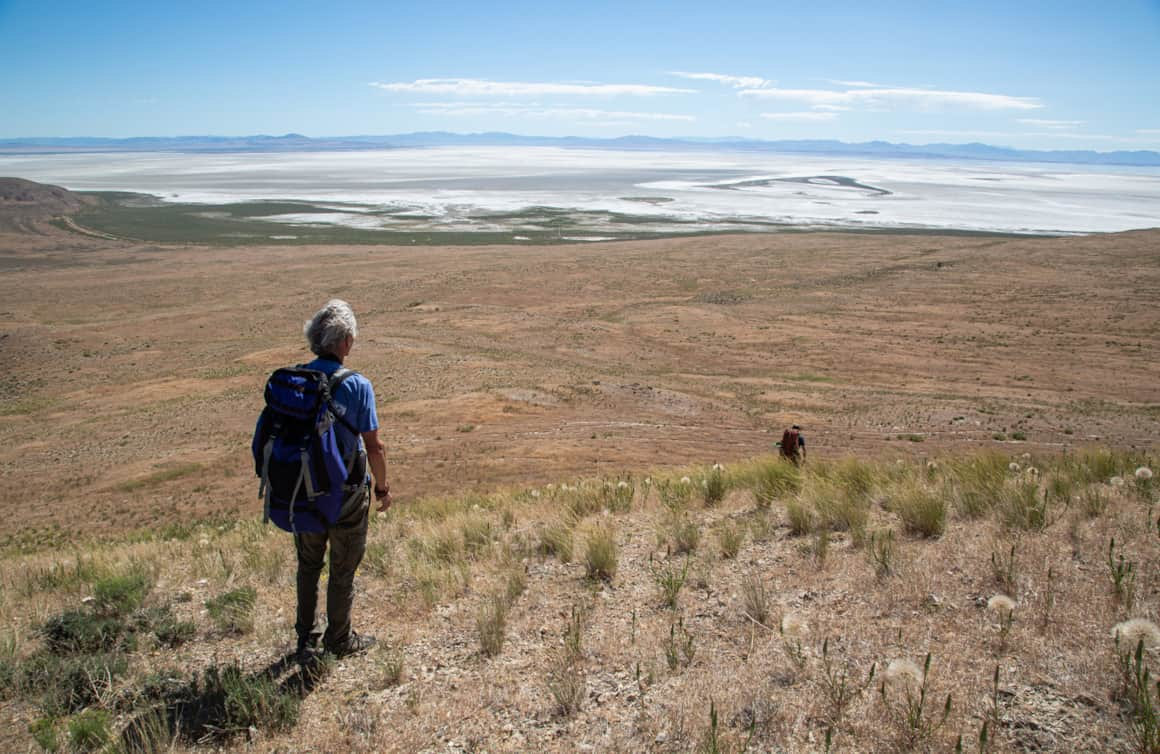
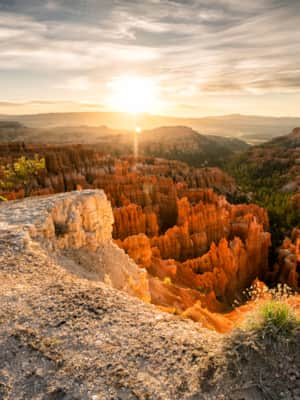
Field Guides: Voices From the Utah Landscape
Meet the people whose lives have been shaped by nature — and are helping others find their way.

